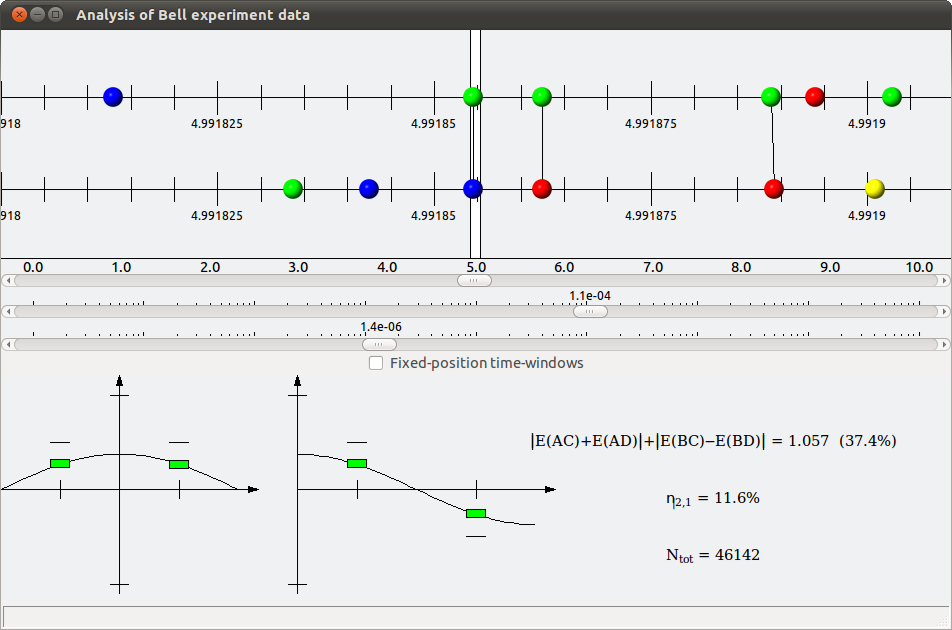Coincidences in Bell experiments
In experiments intended to test violation of Local Realism, one
problem that occurs is to match the remote clocks. Which events
belong together, to form a pair in a Bell state? This is
especially true in experiments that use continuously pumped
sources. I have written a small demonstration that illustrates
this kind of problem. It uses data from an experiment in
Innsbruck, see Weihs
et al, Phys. Rev. Lett. 81:5039 (1998).

Since other researchers and teachers may find use of this program I have decided to release it under the GNU General Public License. So, it is Free Software, and you can use it and redistribute it at will. If you want to modify it, please let me know. I'd be happy to know that people use it and I'll try my best to fix any bugs or enhance functionality.
Download a copy of the code: belltiming.tar.gz. The archive contains the Python program, some images used by the program, and 10 seconds worth of data from the Weihs et al experiment. Extract all of them in a directory, and run the python program from there. You'll need an interpreter for Python with the wxPython and NumPy extensions. These are available for several platforms from the above sites.
Run the program, and try things out. The two time axes are for the two detection sites, the coloured dots are detection events (four different colors: two settings and two outcomes), and the sliders change position and scale of the time axis while the third changes the width of the coincidence window. The Bell violation, and the detection efficiency is showed at the bottom.
Problems, praise, suggestions? Let me know.

Jan-Åke Larsson
Contact:
Department of Electrical Engineering
Linköping University
+46(0)13 281468
< >
Page responsible: Jan-Åke Larsson
Last updated: 2010-11-12
 LiU startsida
LiU startsida
